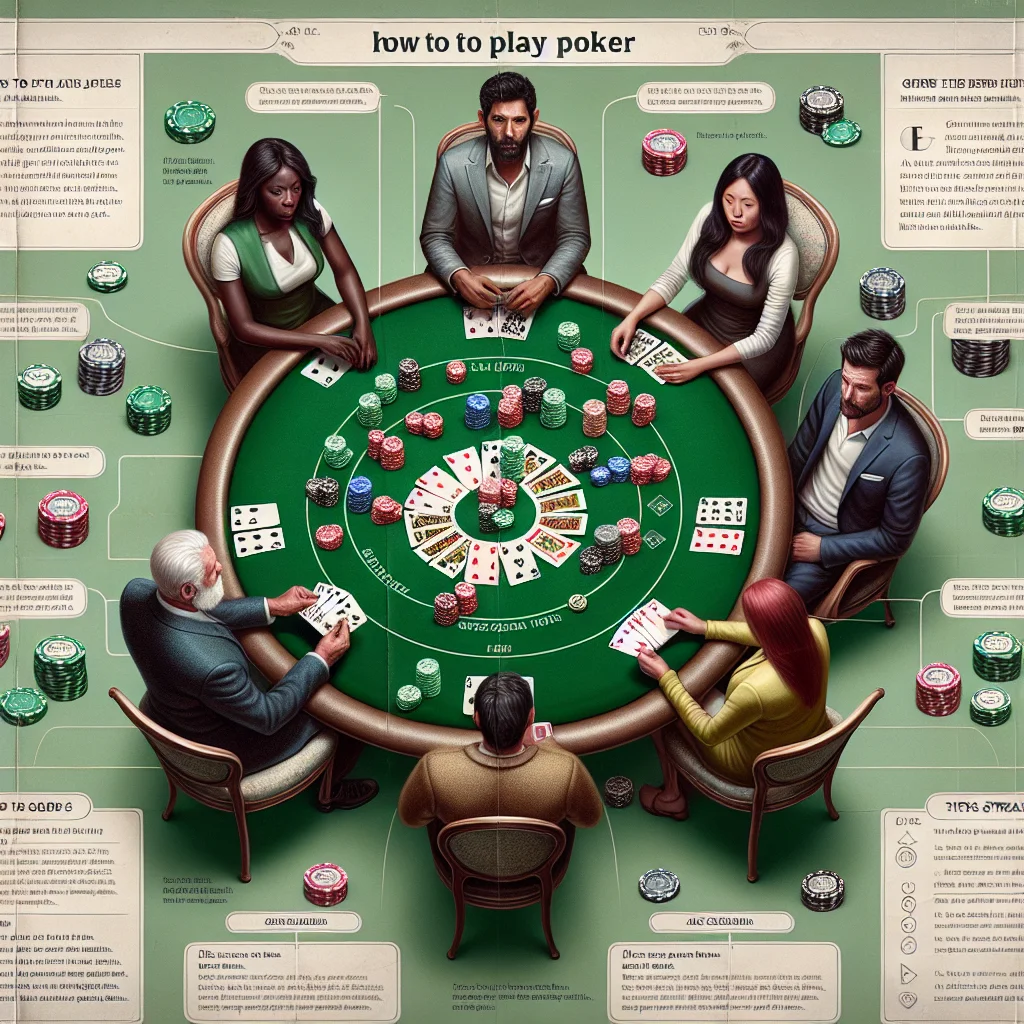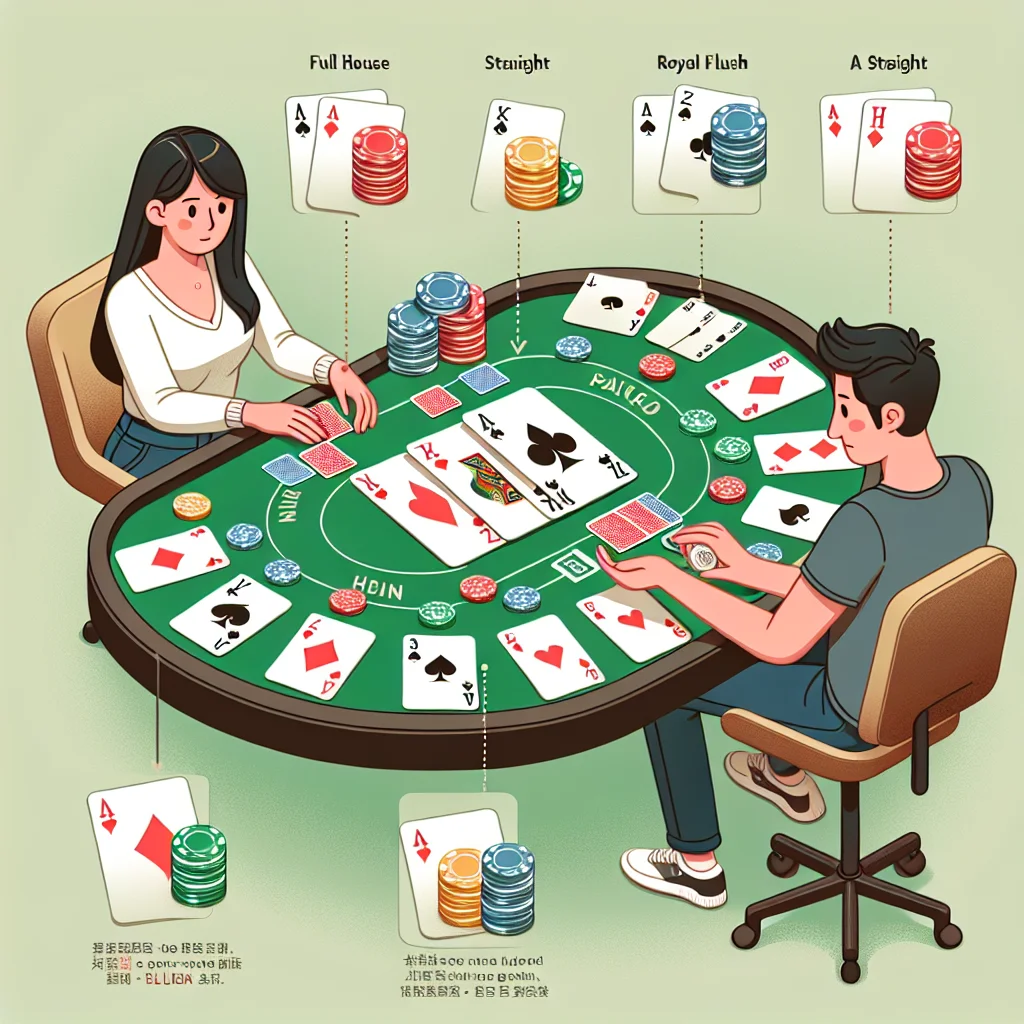-
Table of Contents
Master the art of deception and strategy in the thrilling game of poker.
Introduction
Poker is a popular card game that involves strategy, skill, and a bit of luck. It is played with a standard deck of 52 cards and can be enjoyed by two or more players. The objective of the game is to win the pot, which is the sum of money or chips placed as bets by the players. In this guide, we will provide a brief introduction on how to play poker, including the basic rules and gameplay.
The Basics of Poker: A Beginner’s Guide

Poker is a popular card game that has been enjoyed by millions of people around the world for centuries. Whether you’re a complete beginner or have some experience playing with friends, this beginner’s guide will provide you with the basics of poker and help you get started on your poker journey.
First and foremost, it’s important to understand the objective of the game. The goal in poker is to win the pot, which is the collection of chips or money that players bet during each hand. This is achieved by having the best hand or by convincing other players to fold, giving up their chance to win the pot.
Play Poker
To begin a game of poker, players are dealt a certain number of cards, depending on the variation being played. The most common form of poker is Texas Hold’em, where each player is dealt two private cards, known as hole cards, and five community cards are placed face-up on the table.
Once the cards are dealt, the betting begins. Each player has the option to call, raise, or fold. Calling means matching the current bet, raising means increasing the bet, and folding means giving up and forfeiting any money already bet. The betting continues until all players have either called the highest bet or folded.
After the first round of betting, the dealer reveals the first three community cards, known as the flop. These cards are shared by all players and can be used in combination with their hole cards to form the best possible hand. Another round of betting follows the flop.
Next, the dealer reveals the fourth community card, known as the turn. This is followed by another round of betting. Finally, the fifth and final community card, known as the river, is revealed, and a final round of betting takes place.
Once all the betting is complete, the remaining players reveal their hole cards, and the player with the best hand wins the pot. In the event of a tie, the pot is split between the players with the same hand.
Understanding the different hands in poker is crucial to your success in the game. The highest-ranking hand is the royal flush, which consists of the Ace, King, Queen, Jack, and Ten of the same suit. This is followed by a straight flush, four of a kind, full house, flush, straight, three of a kind, two pair, one pair, and finally, a high card.
It’s important to note that poker is not just about the cards you are dealt but also about the strategy and skill involved in the game. Bluffing, for example, is a common tactic used to deceive opponents into thinking you have a better hand than you actually do. It’s all about reading your opponents and making calculated decisions based on the information available.
In conclusion, poker is an exciting and challenging game that requires a combination of luck, skill, and strategy. By understanding the basics of the game, such as the objective, the betting rounds, and the different hands, you’ll be well on your way to becoming a successful poker player. So gather your friends, grab a deck of cards, and start practicing your poker skills today!
Mastering Poker Strategies: Tips and Techniques
Poker is a game that has been enjoyed by millions of people around the world for centuries. It is a game of skill, strategy, and a little bit of luck. If you are new to poker or want to improve your game, mastering poker strategies is essential. In this article, we will provide you with some tips and techniques to help you become a better poker player.
One of the first things you need to understand about poker is the importance of starting hands. Your starting hand is the two cards that are dealt to you at the beginning of each hand. Some starting hands are stronger than others, and knowing which ones to play and which ones to fold is crucial. A good starting hand consists of two high-value cards of the same suit or two high-value cards of different suits. These hands give you a better chance of making a strong hand as the community cards are revealed.
Play Poker
Another important strategy in poker is knowing when to bet and when to fold. Betting is a way to control the pot and potentially win more money. However, it is important to be selective with your bets. If you have a strong hand, you should bet aggressively to build the pot. If you have a weak hand, it is often better to fold and save your chips for a stronger hand. Knowing when to fold is just as important as knowing when to bet.
Bluffing is another technique that can be effective in poker. Bluffing is when you make a bet or raise with a weak hand to try to make your opponents believe that you have a strong hand. This can be a powerful tool if used correctly, but it is important to be cautious. Bluffing too often can make you predictable and can lead to your opponents catching on to your strategy. It is best to bluff sparingly and only when you have a good read on your opponents.
Position is also an important factor in poker. Your position at the table determines the order in which you act, and this can give you a significant advantage. The later your position, the more information you have about your opponents’ actions before you have to make a decision. This allows you to make more informed decisions and can give you an edge in the game.
Lastly, it is important to pay attention to your opponents’ behavior and betting patterns. This can give you valuable information about the strength of their hands. If an opponent suddenly starts betting aggressively, they likely have a strong hand. If they are hesitant or checking frequently, they may have a weak hand. By observing your opponents’ behavior, you can make better decisions and adjust your strategy accordingly.
In conclusion, mastering poker strategies is essential for becoming a better poker player. Understanding starting hands, knowing when to bet and when to fold, bluffing effectively, considering your position, and observing your opponents’ behavior are all important aspects of the game. By implementing these tips and techniques, you can improve your poker skills and increase your chances of winning. So, gather your friends, practice these strategies, and enjoy the exciting game of poker!
Understanding Poker Hands and Rankings
Understanding Poker Hands and Rankings
Now that you have a basic understanding of the rules of poker, it’s time to delve deeper into the game and learn about the different poker hands and their rankings. Knowing the value of each hand is crucial if you want to become a successful poker player. So, let’s get started!
In poker, the objective is to make the best possible hand using a combination of your own cards and the community cards on the table. The ranking of hands determines who wins the pot at the end of each round. The highest-ranking hand is the royal flush, while the lowest-ranking hand is a high card.
Let’s start with the royal flush, the crème de la crème of poker hands. A royal flush consists of the Ace, King, Queen, Jack, and Ten of the same suit. It is an extremely rare hand, but if you manage to get one, you can be almost certain of winning the pot.
Play Poker
Next up is the straight flush. This hand consists of five consecutive cards of the same suit. For example, 5, 6, 7, 8, and 9 of hearts would be a straight flush. The highest-ranking straight flush is the Ace-high straight flush, while the lowest-ranking one is the Five-high straight flush.
Moving down the ladder, we have four of a kind. This hand consists of four cards of the same rank, such as four Kings or four Aces. The fifth card, also known as the kicker, is irrelevant in determining the winner unless two players have the same four of a kind. In that case, the player with the higher kicker wins.
Next, we have the full house. A full house consists of three cards of the same rank and two cards of another rank. For example, three Queens and two Jacks would be a full house. If two players have a full house, the one with the higher three-of-a-kind wins. If both players have the same three-of-a-kind, the one with the higher pair wins.
Moving further down the rankings, we have the flush. A flush consists of any five cards of the same suit, but not in consecutive order. If two players have a flush, the one with the highest-ranking card wins. If the highest-ranking cards are the same, the second-highest card is compared, and so on until a winner is determined.
Next, we have the straight. A straight consists of five consecutive cards of any suit. For example, 3, 4, 5, 6, and 7 of different suits would be a straight. As with the flush, if two players have a straight, the one with the highest-ranking card wins.
Moving closer to the bottom of the rankings, we have three of a kind. This hand consists of three cards of the same rank, such as three Jacks or three Aces. The other two cards are irrelevant unless two players have the same three of a kind. In that case, the player with the higher kicker wins.
Second to last, we have two pair. As the name suggests, this hand consists of two cards of one rank, two cards of another rank, and one unrelated card. For example, two Kings, two Queens, and a Ten would be two pair. If two players have two pair, the one with the highest-ranking pair wins. If both players have the same highest-ranking pair, the second pair is compared, and so on.
Finally, we have the high card. This is the lowest-ranking hand in poker and occurs when none of the above hands are made. The winner is determined by the highest-ranking card in their hand. If two players have the same high card, the second-highest card is compared, and so on until a winner is determined.
Play Poker
Understanding the different poker hands and their rankings is essential for any aspiring poker player. By familiarizing yourself with these rankings, you’ll be able to make more informed decisions during the game and increase your chances of winning. So, study these hands, practice, and get ready to take your poker skills to the next level!
Advanced Poker Tactics: Reading Opponents and Bluffing
Poker is a game of skill, strategy, and psychology. While beginners may focus on learning the basic rules and hand rankings, advanced players understand that reading opponents and bluffing are crucial tactics for success. In this section, we will delve into the world of advanced poker tactics, providing you with valuable insights on how to read your opponents and effectively bluff your way to victory.
One of the first things to consider when trying to read your opponents is their betting patterns. Pay close attention to how they bet in different situations. Do they tend to bet aggressively when they have a strong hand? Or do they become more cautious and conservative? By observing these patterns, you can gain valuable information about the strength of their hand.
Another important aspect of reading opponents is their body language. Non-verbal cues such as facial expressions, hand movements, and posture can reveal a lot about a player’s confidence or nervousness. For example, a player who suddenly becomes tense or avoids eye contact may be bluffing. On the other hand, someone who appears relaxed and comfortable may have a strong hand. By carefully observing these subtle cues, you can gain an edge in the game.
Play Poker
Furthermore, it is essential to pay attention to the timing of your opponents’ actions. A sudden hesitation before betting or a quick decision to call can indicate uncertainty or confidence, respectively. Timing tells can be particularly useful when playing against experienced players who are skilled at concealing their emotions. By analyzing their timing, you can make more informed decisions and adjust your strategy accordingly.
Bluffing is another advanced tactic that can be highly effective when used correctly. Bluffing involves making aggressive bets or raises with a weak hand in order to deceive your opponents into folding their stronger hands. However, bluffing should be used sparingly and strategically. It is crucial to consider the table dynamics, your opponents’ playing styles, and the overall context of the game before attempting a bluff.
To bluff successfully, you must create a believable story with your betting actions. This means that your bets should be consistent with the story you are trying to tell. For example, if you have been playing conservatively throughout the game and suddenly make a large bet, it may raise suspicions among your opponents. On the other hand, if you have been playing aggressively and continue to do so, your opponents may be more likely to believe your bluff.
It is also important to be aware of your table image when bluffing. If you have been caught bluffing multiple times, your opponents may be more inclined to call your bets. Conversely, if you have been consistently showing strong hands, your bluffs are more likely to be successful. By carefully managing your table image, you can increase the effectiveness of your bluffing strategy.
In conclusion, advanced poker tactics such as reading opponents and bluffing are essential skills for any serious poker player. By observing betting patterns, body language, and timing, you can gain valuable insights into your opponents’ hands. Additionally, mastering the art of bluffing can give you a significant advantage at the poker table. However, it is important to use these tactics strategically and adapt them to the specific dynamics of each game. With practice and experience, you can become a formidable player who can outwit and outplay your opponents.
Q&A
1. How many cards are dealt to each player in a game of poker?
Each player is typically dealt two private cards in a game of poker.
2. What is the objective of poker?
The objective of poker is to win the pot by having the best hand or by convincing other players to fold.
3. How are poker hands ranked?
Poker hands are ranked from highest to lowest, with the royal flush being the highest and a high card being the lowest.
4. What are the basic betting actions in poker?
The basic betting actions in poker include checking, betting, calling, raising, and folding.
Conclusion
In conclusion, playing poker requires a combination of skill, strategy, and understanding of the game’s rules. It is important to study and practice different poker strategies, such as reading opponents, managing bankroll, and making calculated decisions. Additionally, maintaining a disciplined mindset and managing emotions are crucial for long-term success in poker.



